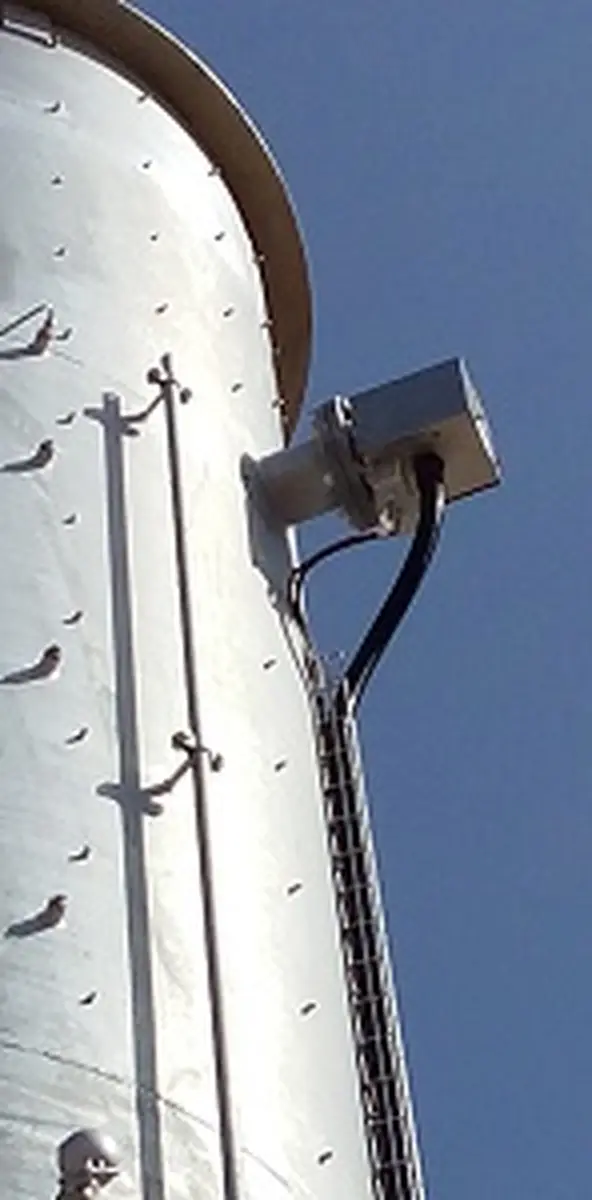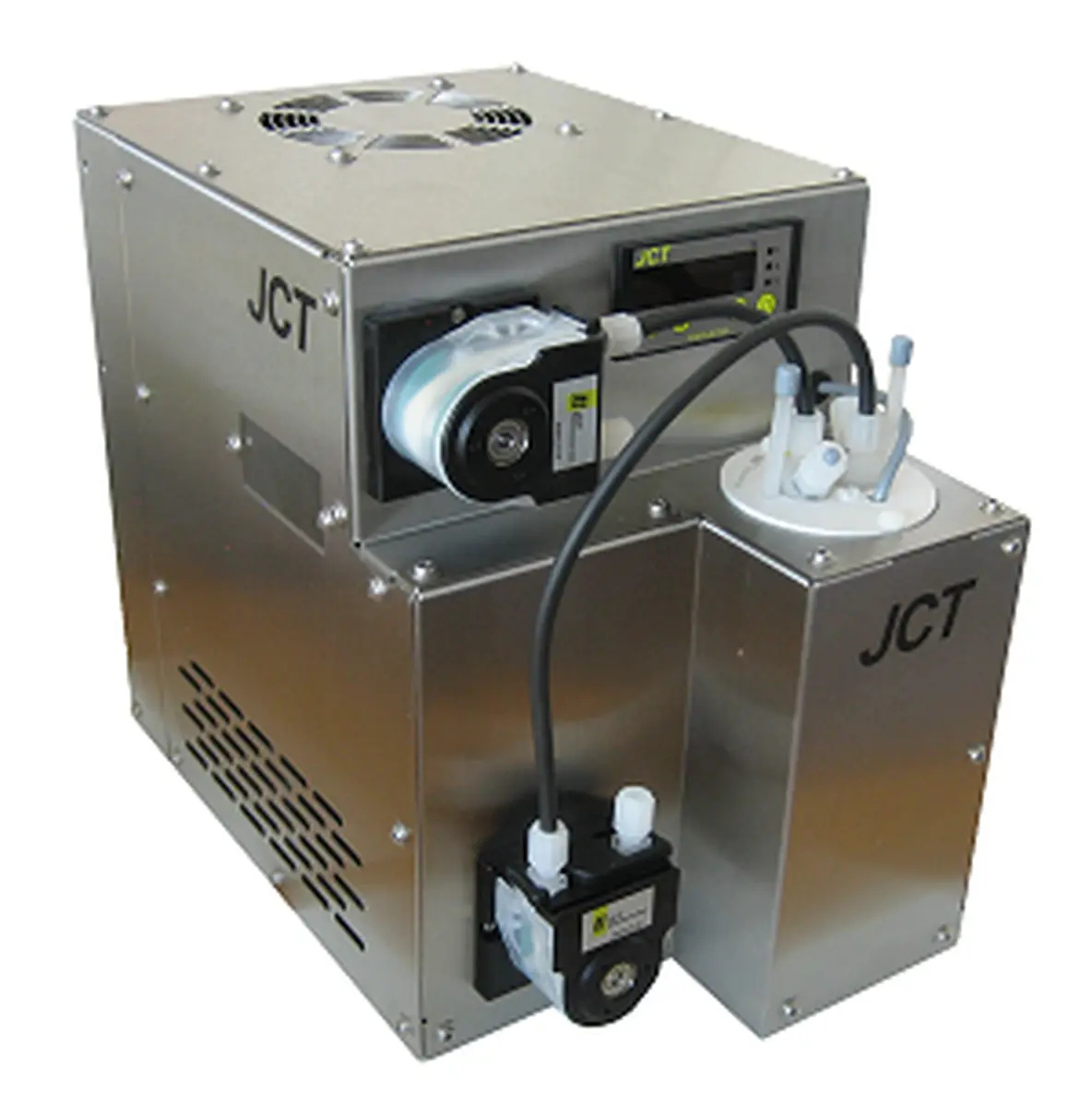Sample Extraction and Gas Conditioning
 When using extractive online gas analysis, it is crucial to present the sample under the correct conditions to the gas analyzer. Gas conditioning refers to preparing the sample in optimal condition before it reaches the analyzer. The aim is to deliver the sample without altering its concentration. In cases where the sample originates from a process or emission stream, it often needs to be conditioned before entering the measuring cell. Typically, the sample must be filtered to remove particulates and then presented to the analyzer without loss of the target component. In practice, a probe with a heated filter and a heated sample line is used. Heating is important to keep the gas above its dew point and prevent condensation losses. If a “cold” analyzer is used, such as a paramagnetic oxygen analyzer, the sample gas is cooled after the heated line in a dedicated gas cooler with minimal contact between the condensate and the sample. Heated analyzers, such as FID and FTIR, can receive the sample gas directly after the heated sample line. For mobile applications, we offer a range of portable probes, heated lines, and portable gas coolers.
When using extractive online gas analysis, it is crucial to present the sample under the correct conditions to the gas analyzer. Gas conditioning refers to preparing the sample in optimal condition before it reaches the analyzer. The aim is to deliver the sample without altering its concentration. In cases where the sample originates from a process or emission stream, it often needs to be conditioned before entering the measuring cell. Typically, the sample must be filtered to remove particulates and then presented to the analyzer without loss of the target component. In practice, a probe with a heated filter and a heated sample line is used. Heating is important to keep the gas above its dew point and prevent condensation losses. If a “cold” analyzer is used, such as a paramagnetic oxygen analyzer, the sample gas is cooled after the heated line in a dedicated gas cooler with minimal contact between the condensate and the sample. Heated analyzers, such as FID and FTIR, can receive the sample gas directly after the heated sample line. For mobile applications, we offer a range of portable probes, heated lines, and portable gas coolers.
Sample Extraction Probe
To avoid condensation, the sample probe is heated above the dew point. A high-surface area filter removes solid particles from the gas stream. Most probes include an inlet for calibration gas. Optionally, a backpurge system can be provided to periodically clean the probe filter using instrument air.
For mobile applications, such as non-continuous measurements by labs or consulting firms, we supply portable probes with a heated filter element. The sample probe can also be optionally heated. A heated sample line can be integrated seamlessly without cold spots, just like with stationary probes.
Sample Lines
 To remain above the dew point during gas sampling, heated sample lines are used. These often feature a replaceable inner tube made of PTFE or PFA, enclosed in an electrically heated jacket, with insulation and a rugged outer layer. The materials for the inner and outer layers are chosen based on environmental and application-specific conditions. For mobile setups, a nylon braided outer jacket is commonly used due to its compactness and flexibility. Common lengths are 3, 5, or 10 meters, though lengths up to 30 meters are also available when needed.
To remain above the dew point during gas sampling, heated sample lines are used. These often feature a replaceable inner tube made of PTFE or PFA, enclosed in an electrically heated jacket, with insulation and a rugged outer layer. The materials for the inner and outer layers are chosen based on environmental and application-specific conditions. For mobile setups, a nylon braided outer jacket is commonly used due to its compactness and flexibility. Common lengths are 3, 5, or 10 meters, though lengths up to 30 meters are also available when needed.
Gas Coolers
When "cold" analyzers are used, the sample gas must be cooled before reaching the analyzer without losing the target components. Gas coolers are designed to minimize contact time between the gas and any formed condensate. This reduces the risk of soluble components being lost in the condensate and not reaching the analyzer. Based on the specific application, operating conditions, and customer requirements, we recommend the appropriate gas conditioning system or cooler. Both compressor and Peltier element-based coolers are available for portable and stationary applications.
Diluter
 In special situations, it may be necessary to reduce gas concentrations before analysis. Ravebo designs and integrates dilution systems for gas analysis. These systems can be fully heated, and critical capillaries ensure the correct dilution ratios of the sample gas.
In special situations, it may be necessary to reduce gas concentrations before analysis. Ravebo designs and integrates dilution systems for gas analysis. These systems can be fully heated, and critical capillaries ensure the correct dilution ratios of the sample gas.
Delivering the Optimal Sample
Delivering the sample in optimal condition—without altering the concentration of the components of interest—is not always straightforward. Conditioning options include filtering, cooling, drying, diluting, or heating. In environmental applications, the conditioning requirements are often standardized by regulations. In R&D and process applications, additional technical challenges often arise.
